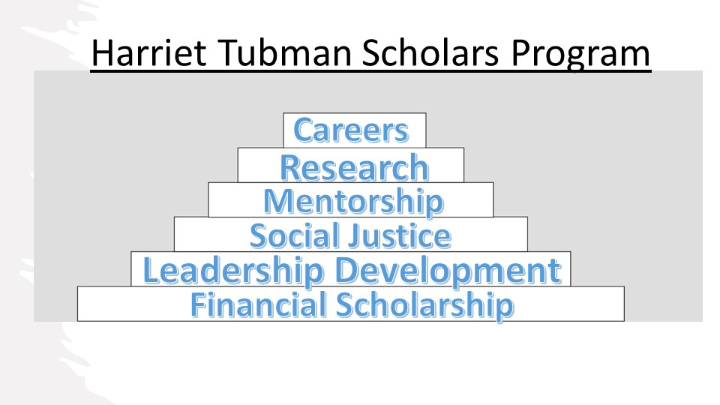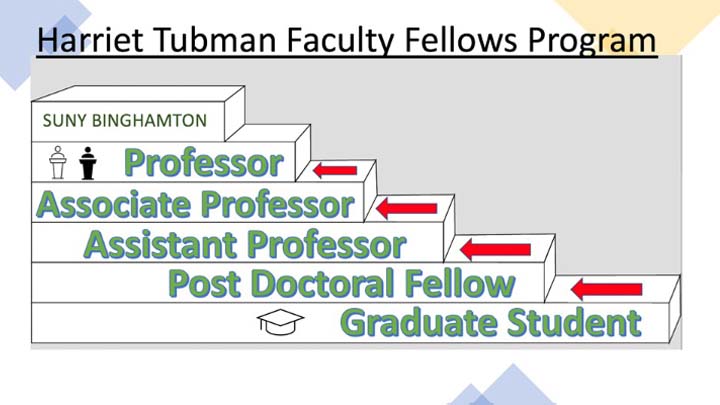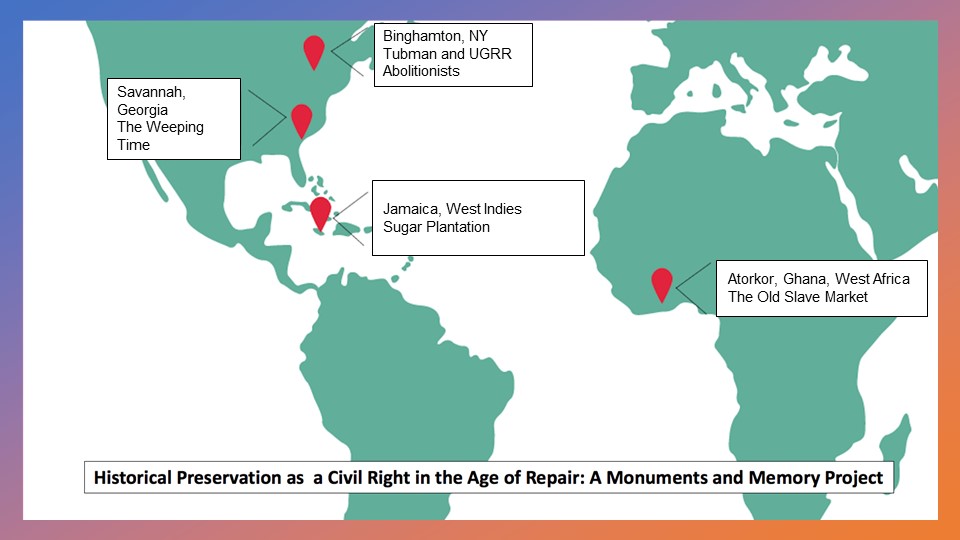The Harriet Tubman Center addresses structural inequities on college campuses and beyond.
Our Mission
The new Harriet Tubman Center for Freedom and Equity opened in September 2019. Our intention is to steer the research, writing and programs of the center towards the following priorities:
- History and Equity
- Educational Equity
- Medicine/STEM fields and Equity
New and Ongoing Programs
I. TUBMAN PIPELINE AND MENTORING PROGRAMS
One major way to bridge current racial disparities on the university level is to develop more PIPELINE PROGRAMS for underrepresented students, faculty and staff. As such, the Tubman Center is launching the following leadership and mentorship programs which help bridge gaps in our academic community.
The Harriet Tubman Center is looking for funding opportunities to create:
Harriet Tubman Scholars Program for undergraduate and graduate students
- A pipeline scholarship program focusing on diversity, inclusion, and leadership development for historically underrepresented students;
Harriet Tubman Faculty Fellows Program
- Tubman Center is creating a competitive Faculty Fellows program which will allow faculty members to affiliate with the Center for a semester and focus on diversity equity and inclusion research related work;
 |
 |
II. MONUMENTS AND MEMORY PROJECT
Historical erasure affects our everyday thinking about racial issues; Our Monuments and Memory Project is essential to fill the gaps left by incomplete educational programming. Inspired by the powerful work done establishing memorials of the Holocaust as well as the Tubman Center's successful creation of a Truth and Reconciliation Commission, we propose to develop four memorials and accompanying educational programming based on the 1960’s freedom school model in locations deeply impacted by slavery and the slave trade including:
- A statue and memorial garden of Harriet Tubman on Binghamton University’s campus representing one stop on the iconic Underground Railroad; in addition a plaque will identify other upstate NY abolition sites reflecting a multicultural group of abolitionists: William Seward, Gerritt Smith, Frederick Douglass etc.
- The first memorial of The Weeping Time-the largest slave auction in US history accompanied by a small educational center. (Savannah, Georgia);
All of these locales were deeply impacted by slavery and the slave trade, yet today there is little or no acknowledgment of what took place in these communities. Furthermore, these locations including slave plantations in the US are sometimes glamorized or whitewashed of their true history. The Monuments and Memory project is thus an opportunity to showcase the contributions of people of African descent to the building of these communities and more generally the modern world.

III. CURRICULUM AND STAFF DEVELOPMENT WITH BINGHAMTON SCHOOL DISTRICT AND OTHER SCHOOL DISTRICTS IN THE SOUTHERN TIER AND ACROSS THE COUNTRY.
We already have strong relationships with local school districts who have sought out our assistance for curriculum and staff development. Many teachers and administrators are interested in the Tubman legacy but this research needs to be highlighted in their curricula offerings. The Tubman Center faculty and staff stand ready to work with these school districts when funding is available to mount these staff and curriculum development programs.
IV. IMPLEMENTATION OF THE TRUTH AND RECONCILIATION COMMISSION RECOMMENDATIONS
In 2019-2021 the Harriet Tubman Center led the efforts to create the TRC and organized six listening sessions with various stakeholders in our community. This resulted in the successful creation of 10 Recommendations from the Truth and Reconciliation Commission. This academic year, TRC panel members in conjunction with the Vice President of DEI and the President’s Office, to implement the ten recommendations.
The programs and events of the Harriet Tubman Center for Freedom and Equity are open to ALL regardless of race, color, national origin, or sex, and are consistent with all current governing federal and state nondiscrimination law.
 Header image courtesy of See It History
Header image courtesy of See It History
 @buharriettubmancenter
@buharriettubmancenter